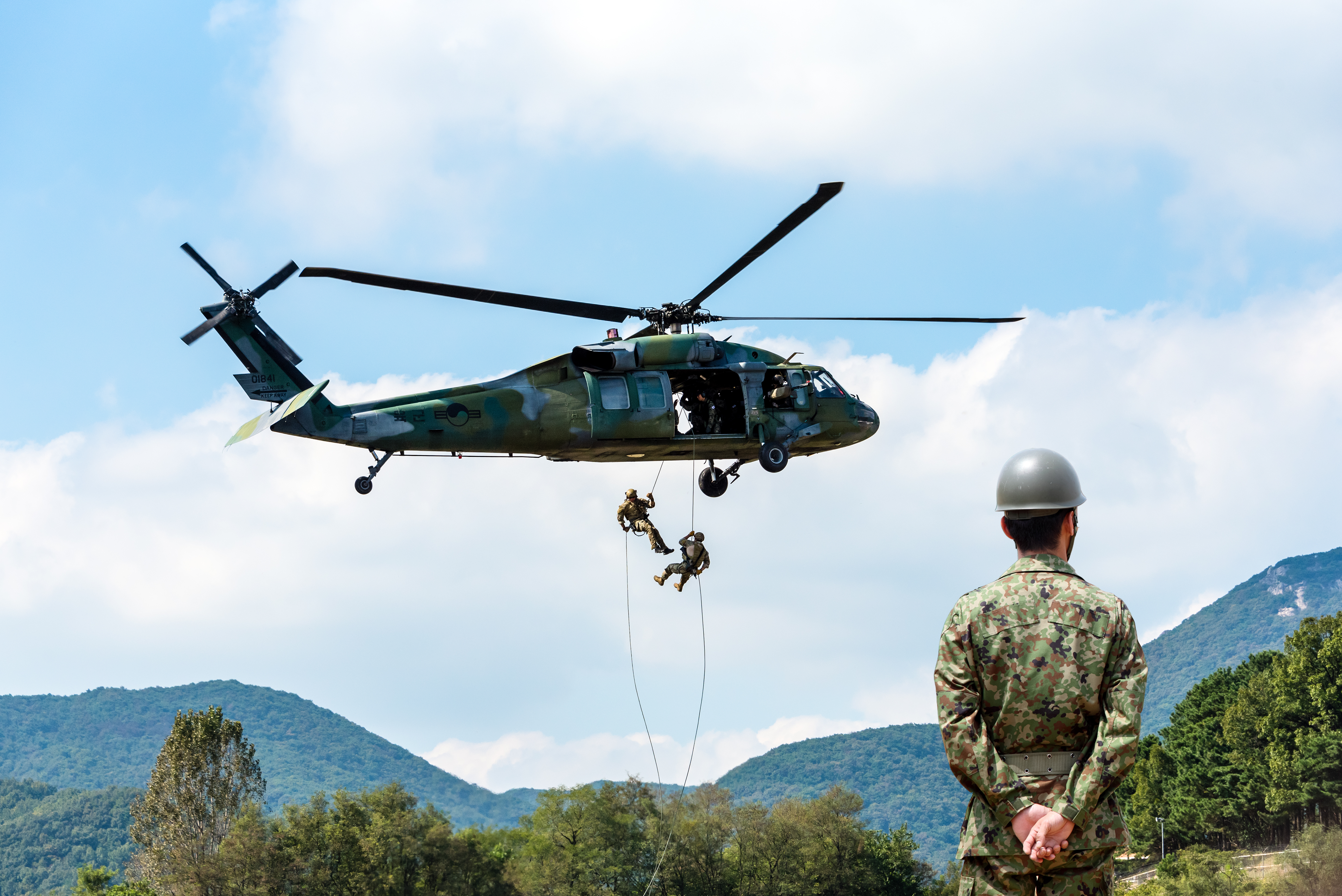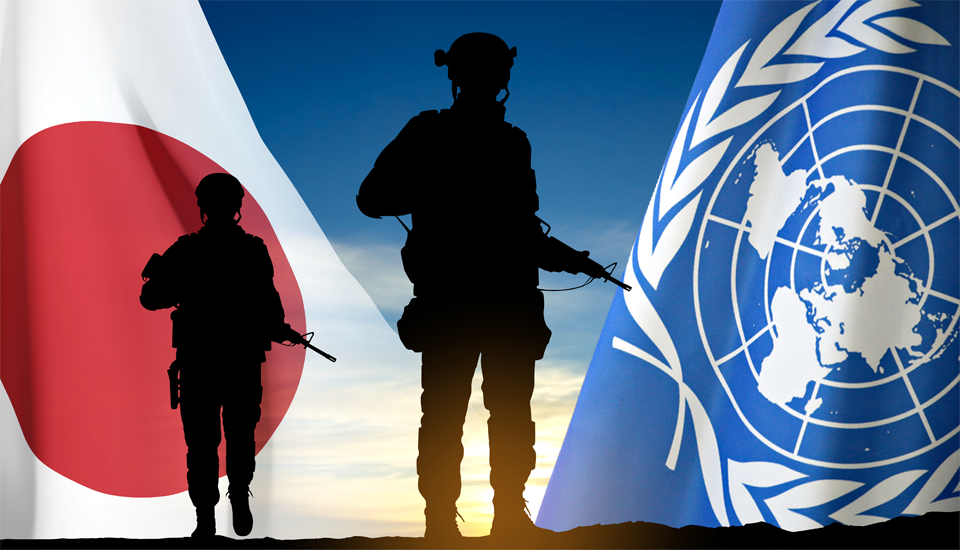
NK Update for March 2023
Special Report | April 24, 2023
Minah Kang
Johns Hopkins University
This month’s NK Update covers joint military exercises between the US and South Korea, and the US sanctions on North Korea in response to the intensifying North Korean nuclear threat.
In March, North Korea conducted several provocative military drills, including the launch of two strategic cruise missiles by a submarine, a missile-launching drill, a tactical drill to improve nuclear counterattack capability, and a demonstration education firing drill. On the other hand, the US and South Korea conducted joint military exercises, “Freedom Shield,” from March 13 to 23, the longest and largest scale to date, aimed at reinforcing the combined defense capabilities in response to the nuclear threat posed by North Korea. Meanwhile, US sanctions are implemented in response to North Korea’s nuclear and arms threats.
North Korea's Recent Military Drills Elicit Strong Global Criticism
In March, the North Korean government conducted several provocative military drills. On March 12, one day before the start of the South Korea-US joint military exercise, Freedom Shield, North Korea fired two submarine-launched cruise missiles. During the missile launching drill, two short-range ballistic missiles (SRBM) were fired on the 14th, and on the 16th, during the South Korea-Japan Summit Meeting held in Japan, an intercontinental ballistic missile (ICBM) was fired. On the 18th and 19th, a tactical drill to improve nuclear counterattack capability was held to improve North Korea’s nuclear counterattack capability. This exercise simulated a counterattack against a nuclear threat and aimed to demonstrate the country’s preparedness for war. Kim Jong Un, the leader of North Korea, guided the drill, which was divided into three parts: a nuclear strike control system exercise, training for switching to a nuclear counterattack posture, and a drill for launching a tactical ballistic missile with a mock nuclear warhead. The drill proved the reliability of the nuclear explosion control devices and detonators fitted in the nuclear warhead. Kim expressed satisfaction with the drill and stressed the need for continuous training to prepare for any unexpected circumstances. On March 27, Kim Jong Un supervised the mounting of nuclear warheads on ballistic missiles. He learned about the weapons’ specifications and features and examined plans for a nuclear counterattack operation. Kim praised the Nuclear Weapons Institute for their work and emphasized the importance of strengthening their nuclear force. He stated that North Korea’s nuclear force is aimed at defending their state and regional peace. Also on the 27th, a missile unit in the central front conducted a demonstration education firing drill. The purpose was to familiarize sub-units with procedures for an important firing task.
Leaders from different countries have strongly condemned North Korea’s recent provocative acts, including the launches of ICBM. On March 15, the US White House condemned North Korea’s ICBM test in a statement by National Security Council (NSC) spokesperson Adrienne Watson. The statement emphasized that the launch violated multiple UNSCRs, needlessly raised tensions in the region, and risked destabilization the security situation. During the South Korea-Japan Summit Meeting on the 16th, Kishida Fumio, Prime Minister of Japan, and Yoon Suk-Yeol, President of the ROK, agreed to enhance the deterrence and response capabilities of the Japan-US and South Korea-US alliances. The foreign ministers of the Group of Seven (G7) nations (Canada, France, Germany, Italy, Japan, the United Kingdom, and the United States) and the High Representative of the European Union released a statement condemning North Korea’s latest ICBM launch. The ministers strongly criticized North Korea’s escalatory actions, including its irresponsible rhetoric about the use of nuclear weapons and its record number of ballistic missile launches. Notably, they clearly denied North Korea’s aspiration to attain the status of a nuclear-weapon State in accordance with the Treaty on the Non-Proliferation of Nuclear Weapons. The ministers also urged North Korea to engage in meaningful diplomacy toward denuclearization and to accept the repeated offers of dialogue from Japan, the United States, and the South Korea.
US and South Korea Conduct Joint Military Exercises, Freedom Shield” in Response to North Korean Nuclear Threat
The US and South Korea have conducted joint military exercises from March 13 to 23, with the aim of strengthening their combined defense posture in response to the nuclear threat from North Korea. The exercises, dubbed “Freedom Shield”, are the longest and largest-scale version yet and include large-scale combined field training exercises, which are designed to improve the combined operational capabilities of the US and South Korean military. The exercises were conducted in the wake of a series of ballistic missile launches by North Korea, which has demanded that the US and South Korea cease provocations and joint military exercises.
During the exercises, the South Korean and US air forces conducted combined air drills with the deployment of US B-1B strategic bombers on the Korean Peninsula, involving ROKAF F-35A stealth fighters and USAF F-16 fighters. The two nations have evaluated the drill as a strong combined defense readiness posture and an unwavering dedication to providing extended deterrence for the protection of the Korean Peninsula. They have also significantly enhanced interoperability, swift response force deployment capabilities of the ROK/US Air Forces, and wartime strategic strike capabilities. Meanwhile, Ned Price, a spokesperson for the US Department of the State, has stressed that the exercises are defensive, and they are exercising only because North Korea has engaged in provocations and has put the US in a position to ensure that it is capable of making good on the ironclad defensive security commitments it has to its treaty allies, South Korea and Japan. The US harbors no hostile intent towards North Korea and is committed to the security of South Korea and the alliance’s combined defense posture.
On the other hand, Kim Son Gyong, vice-minister for International Organizations of the Foreign Ministry of the DPRK, has condemned the joint air drill of the US and South Korea and accused them of conducting special operation drills aimed at a sudden strike at the North Korea’s major strategic bases. He believes that the UN should urge the US and South Korea to immediately halt their provocative remarks and joint military exercises that are raising the level of confrontation and undermining peace in the region. Meanwhile, North Korean Ministry of Foreign Affairs published that the Russian Ambassador to North Korea, Alexandr Matsegora, made a speech during a reception on March 17, marking the 74th anniversary of the North Korea-Russia agreement on economic and cultural cooperation. In his speech, he expressed Russia’s support for North Korea’s appeal to oppose the US and its followers’ provocative acts, which are worsening the regional situation. He noted that the U.S. has been conducting large-scale military drills, introducing strategic attack weapons into the Korean peninsula and engaging in confrontational rhetoric, and that North Korea has been compelled to take counteractions in response. The Russian ambassador emphasized that Russia stands with North Korea in the struggle to establish a “new and fair world order free from U.S. policy of coercion.”
Wang Wenbin, the spokesperson for Chinese Ministry of Foreign Affairs expressed grave concern over the military exercises conducted by the US and South Korea. He stated that the primary reason for the current situation on the Korean Peninsula is the refusal of parties to respond to North Korea’s denuclearization measures and their continued pressure and deterrence against North Korea. He emphasized the need for restraint and actions conducive to peace and stability, as well as meaningful dialogue to address each other's “legitimate concerns.” He will continue to follow the dual-track approach and the principle of phased and synchronized steps to advance the political settlement process on the Korean Peninsula. Wang Wenbin also criticized the naming of the current subjects of the US-South Korea's joint drill such as "amphibious landing” and “decapitation,” suggesting that this is not a defensive drill. Moreover, Mao Ning, another spokesperson for Chinese Foreign Ministry, announced the arrival of a new Chinese Ambassador, Wang Yajun, to North Korea to advance bilateral relations.
US Impose Sanctions to Counter North Korean Nuclear and Arms Threats
The United States government also utilized sanctions as a prominent tool to address the ongoing threat posed by North Korea’s nuclear program and arms deals with Russia. The US Department of Treasury’s Office of Foreign Assets Control (OFAC) imposed sanctions on several entities and individuals, including Chilsong Trading Corporation and Korea Paekho Trading Corporation, for their involvement in generating revenue for North Korea’s weapons of mass destruction (WMD) and ballistic missile programs. The European Union also imposed sanctions on these entities and individuals for engaging in sanctions evasion and supporting North Korea’s nuclear program.
On March 30, the US government also designated Ashot Mkrtychev for arms-related activities involving North Korea and Russia. This is the first designation in the North Korea sanctions program in response to Russia’s attempt to secure weapons from the country. Mkrtychev worked with North Korean officials in an attempt to obtain more than two dozen different kinds of weapons and munitions for Russia in exchange for materials ranging from commercial aircraft to raw materials and commodities to be sent to North Korea. He also confirmed Russia’s readiness to receive military equipment from North Korea with senior Russian officials. The US government’s action is part of its ongoing efforts to undermine Russia's ability to wage war, weaken its military-industrial complex, and deny North Korea revenue it can utilize to further develop its UN-prohibited unlawful WMD and ballistic missile programs.
In the face of North Korea’s increasingly provocative military activities in March 2023, various measures including regional security cooperation, diplomatic conversations, and sanctions have been employed simultaneously to secure “regional peace.” However, despite all parties reiterating regional peace as their goal, regional security tensions seem to be escalating. The current situation on the Korean peninsula is characterized by a bipolar form of confrontation between China-North Korea-Russia and Japan-Korea-US. With Russia’s ongoing war and the increasing economic and military connections between North Korea and Russia, the security situation on the peninsula is becoming more complex. Moreover, the miscommunication of concepts, such as the definition of “regional peace” and “defensive drill,” may have practical effects on the efforts to achieve peace and stability in the region. Thus, it is crucial to reconsider the concept of the region and regional peace as a preliminary step towards resolving the security crisis on the Korean peninsula. Furthermore, the South Korean government must continue to work with its regional and international partners to find a sustainable solution to the crisis.
■ Minah Kang is a Ph.D. candidate in the Department of Political Science at Johns Hopkins University. Her research interests include International Influences on Domestic Politics, State-Society Relations, Political Exclusion, Identity and Otherness, Global History of Cold War and East Asia, and Korean War. She has obtained her B.A. Political Science and International Relations & Women’s studies and M.A. in Political Science and International Relations at Ewha Womans University.
■ Typeset by Junghoo Park, Research Associate
For inquiries: 02 2277 1683 (ext. 205) | jhpark@eai.or.kr
![[Global NK Commentary Series] North Korea's New Cold War Narrative](/upload/commentary/09da1c044f9a88a2604108134098179c.png)
[Global NK Commentary Series] North Korea's New Cold War Narrative
Won Gon Park, Dong Ryul Lee, Hyun-wook Kim, Seho Jang, Seunghee Oh, Jihwan Hwang | April 06, 2023

Pyongyang in Search of a New Cold War Strategy
Jihwan Hwang | April 05, 2023

Japan’s Stance on North Korea’s “New Cold War” Narrative: Strengthening Japan’s Defense and Global Normative Power
Seunghee Oh | March 29, 2023
LIST